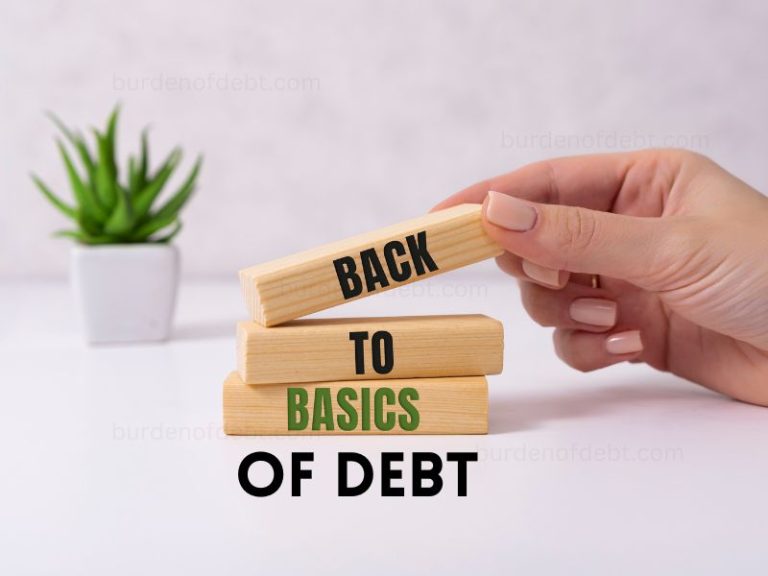The Risks of Living On Credit
Embracing the Unvarnished Reality: The Perils of Living on Credit
In our modern society, the notion of living on credit has arguably become an enticing yet precarious standard. It’s as though this ephemeral pleasure in acquiring the latest gadgets or indulging in lavish lifestyles holds an irresistible allure, compelling many to step into the potentially dangerous terrain of financial instability. Through this lens, let us delve deeper into the intricacies and risks of living on credit, a topic that is undeniably pertinent to individuals seeking guidance on managing consumer debt effectively.
The Allure of a Prosperous Facade
Our initial observations indicate that the glitz and glamour often displayed by those around us can sometimes distort our perspective of financial prudence. You may find yourself surrounded by acquaintances boasting the newest high-end gadgets or showcasing their latest expensive acquisitions. It seems as though they are indulging in the finer things in life without a care in the world. In this environment, it becomes almost second nature to desire similar possessions to augment your enjoyment of life.
However, it is critical to note that what glitters may not always be gold. It’s highly probable that these individuals are living beyond their actual means, caught in a vicious cycle of debt that tends to spiral out of control with time. This phenomenon can be perceived as a siren song, luring many into a trap of unsustainable financial habits. It is, therefore, crucial to maintain a balanced perspective and not be swayed by the outward appearance of financial prosperity.
The Precipice of Credit Indulgence
Imagine standing at the precipice of a steep cliff, with the enticing whispers of extravagant living coaxing you to step further into the abyss of debt. Credit cards, in this scenario, act as a perilous bridge that offers a transient passage to the land of luxuries, yet with a steep price to pay at the end.
When considering making a purchase through credit, it is paramount to introspect deeply on your financial standing. The critical question to ask oneself is whether the ensuing payment cycle will not leave you in a financially strained position. Essentially, succumbing to the impulse of immediate gratification through credit purchases might seem like a thrilling escape route, but like a fuel-depleting vehicle, it eventually leads to a dead end. Thus, embracing restraint and calculating the long-term implications of such decisions should be at the forefront of your mind.
A Glimpse into the Financial Abyss: A Real-Life Scenario
Let us illustrate this with a tangible scenario. Picture yourself enamored by the latest smartphone model that has just hit the market. The sleek design and advanced features appear irresistibly tempting, urging you to acquire it instantly, even if it means resorting to credit. However, succumbing to this temptation not only inflates your debt but potentially catapults you into a whirlpool of financial instability.
If, for instance, you opt to make this purchase on your credit card, it might seem like an easy escape route from the clutches of financial restraint. However, as the payment due date approaches, the looming financial burden becomes glaringly evident. It’s akin to attempting to outrun a hungry lion; a pursuit that is both risky and futile in the long run.
Navigating the Treacherous Waters of Credit
So how does one navigate these treacherous waters successfully? The answer lies in developing a sound financial strategy that emphasizes living within one’s means. It involves cultivating a mindset that prioritizes financial stability over momentary pleasures. It is about fostering a culture of financial responsibility that encourages savings and prudent investment choices.
Moreover, it’s imperative to be equipped with the knowledge and tools necessary to manage your finances effectively. This might encompass educating oneself on the nuances of credit management, understanding the implications of high interest rates on credit card debts, and adopting strategies to mitigate the risks associated with living on credit.
A Beacon of Hope: Strategies for a Stable Financial Future
Nevertheless, all is not lost. For individuals navigating the murky waters of consumer debt, adopting a realistic and pragmatic approach to managing finances can indeed serve as a beacon of hope. It’s about forging a path that is grounded in financial prudence, one that shuns the lure of living on credit and embraces the virtues of financial stability and independence.
At this juncture, you might wonder what concrete steps one can take to avoid falling into the credit trap. Firstly, it involves setting realistic financial goals that are aligned with your income and expenditure patterns. Secondly, it entails cultivating a savings habit, where a portion of your income is set aside for future needs and investments. Additionally, seeking professional advice on managing debts and finances can provide valuable insights and guidance in steering clear of the risks associated with living on credit.
By embarking on this journey of financial enlightenment, not only do you safeguard your financial future, but you also foster a healthy financial ecosystem that promotes well-being and prosperity for all.
The Mirage of Material Possessions
Navigating through life sometimes seems like a never-ending race to accumulate the newest and most glamorous possessions. Your neighbor’s shiny new car or your colleague’s luxury vacation may sometimes lead you to question the quality of your own experiences and possessions. But it’s essential to remember that indulging in this race can foster a dangerous habit of living on credit.
One might argue that in the grand scheme of things, the joy derived from new possessions is transient. It fades away, leaving behind a void that constantly demands to be filled with newer, flashier acquisitions. This cycle, akin to a hamster running tirelessly on a wheel, leads nowhere but toward a future marred by financial strain and perpetual debt.

A Time to Reflect: Assessing Your Financial Landscape
It is prudent at this point to take a step back and engage in an honest assessment of your financial landscape. Establishing a clear understanding of your financial boundaries can help steer you clear of the looming debt trap. It entails developing a keen awareness of your income streams, monthly expenses, and the lurking dangers of succumbing to the pressures of consumerism.
Consider this: each time you ponder about yielding to the enticing call of credit purchases, envision the hungry lion of debt gradually gaining on you. This visualization can serve as a powerful deterrent, encouraging you to think twice before venturing down the perilous path of credit-induced financial turmoil.
Crafting a Sustainable Future: The Pillars of Financial Stability
So, how can one craft a future that stands firmly on the pillars of financial stability? Well, the journey begins with embracing the virtues of frugality and financial discipline. It involves recognizing the inherent value in adopting a lifestyle that is not enslaved by the desires for material possessions.
At the core of this approach is the principle of living within your means. It promotes the idea that financial peace is attainable through a conscious effort to avoid debt accumulation. It encourages the cultivation of habits that foster financial independence, such as consistent savings, wise investments, and a restrained approach to spending.
Real-Life Applications: Strategies for Debt-Free Living
As we venture further into this critical discussion, let us explore some real-life strategies that have proven to be effective in promoting a debt-free life. One notable approach is the adoption of the 50/30/20 budgeting rule, which stipulates that 50% of your income should be allocated towards necessities, 30% towards discretionary expenses, and 20% towards savings and debt repayment.
Furthermore, adopting a minimalist lifestyle can be a transformative experience. It involves distinguishing between your “wants” and “needs”, thereby enabling you to make informed decisions that are not dictated by societal pressures or external influences. It’s about cherishing the joy derived from simple pleasures and fostering a deeper appreciation for the things that truly matter in life.
Moreover, seeking assistance from financial advisors can be a prudent step in charting a course toward financial stability. These professionals can provide insightful advice on managing your finances effectively, helping you avoid the pitfalls associated with living on credit.
Towards a Brighter Tomorrow: Embracing Financial Wisdom
In conclusion, it is evident that the risks associated with living on credit are manifold. They threaten to engulf individuals in a vicious cycle of debt and financial instability. However, by embracing financial wisdom and adopting prudent financial habits, it is possible to forge a path toward a brighter, debt-free future.
By aligning your financial practices with the principles of frugality and financial discipline, you can build a future that is not overshadowed by the looming cloud of debt. It is a journey that demands courage, persistence and a steadfast commitment to fostering financial independence and well-being.
Let us endeavor to break free from the shackles of consumer debt and stride confidently toward a future that promises financial stability and peace of mind.
(Editor note: Updated 9/9/23)
© 2015-2023 by burdenofdebt.com, a LIVenture. All rights reserved. No part of this document may be reproduced or transmitted in any form or by any means, electronic, mechanical, photocopying, recording, or otherwise, without prior written permission of LiVentures LLC.






